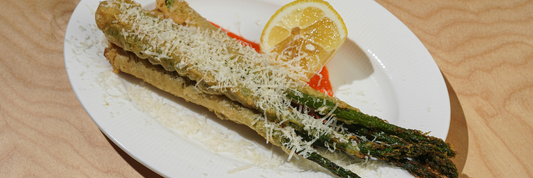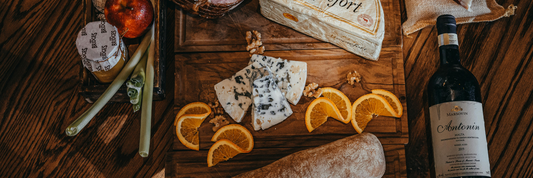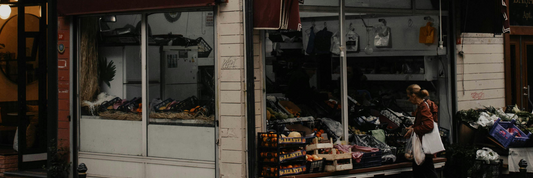Snack packaging isn’t just about wrapping food, it’s a silent brand ambassador. In today’s crowded retail and e-commerce landscape, snack packaging design plays a crucial role in attracting attention, communicating value, and building customer trust. From the color palette you choose to the materials and finishes that reflect quality, every design decision influences how consumers perceive your product. Done right, packaging becomes more than a container; it becomes a story of freshness, convenience, and credibility. This guide will walk you through the strategies that leading snack brands use to stand out on shelves, capture online shoppers, and foster long-term loyalty.
- 7 Types Of Food Packaging Materials. Pros and Cons of Different Packaging Materials
- Food Packaging: What is it? The Role of Packaging in Food Preservation and Safety
- Top 10 Biodegradable Packaging Materials You Should Know
Why Packaging Design Matters in the Snack Market
In the competitive snack industry, packaging design is often the first and strongest sales driver. It shapes first impressions, communicates trust, and reinforces your brand’s message in just a few seconds.
The Psychology of First Impressions
-
Visuals influence perceived quality. Studies show up to 90% of first impressions are based on color.
-
Bright colors = energy and indulgence (chips, candy).
-
Natural tones = health and sustainability (granola, nuts).
-
Minimalist palettes = premium positioning.
In short, snack packaging design sets expectations before a single bite is taken.
Design as a Trust Signal
-
Transparency (window packs, clear films) builds confidence.
-
Ingredient cues (nut icons, fruit visuals) highlight authenticity.
-
Clean layouts feel professional and credible.
With 58% of consumers skeptical of brand claims, design acts as a trust anchor that reassures buyers.
Data That Proves the Impact
-
Colors boost recognition by 80%.
-
Transparent packaging increases purchase intent by 30%+.
-
60% of shoppers say packaging influences repeat purchases.
These numbers prove that packaging design directly impacts sales and loyalty.
Branding & Messaging Integration
Great design aligns with your brand story:
-
Playful fonts = fun snacking.
-
Matte finishes = premium health focus.
-
Consistent colors = stronger recall.
Packaging is both a sales tool and brand storyteller, turning browsers into loyal customers.

Core Elements of Snack Packaging Design
Successful snack packaging design is more than just aesthetics, it blends psychology, functionality, and branding to capture attention and build trust. Below are the five core design elements that influence consumer behavior and purchasing decisions.
Color & Psychology
Color is one of the most powerful tools in packaging design. Up to 90% of first impressions are based on color, making it essential to get this element right.
-
Emotions & Appetite:
-
Red & yellow spark appetite and energy (common in chips and fast snacks).
-
Green & earthy tones suggest natural, healthy, or organic positioning.
-
Black & gold convey premium, indulgent experiences.
-
Red & yellow spark appetite and energy (common in chips and fast snacks).
-
Contrast vs Harmony: Bold contrasts help products stand out on crowded shelves, while harmonious palettes strengthen brand identity across product lines.
-
Case Example: Doritos’ bold red and black bags emphasize excitement, while KIND Bars use muted, natural colors to highlight health and transparency.
Align your snack packaging colors with both consumer psychology and your brand personality.

Typography & Messaging
Typography guides the shopper’s eye and communicates credibility. A clear hierarchy is critical:
-
Brand name (recognition)
-
Product name (clarity)
-
Key benefit (gluten-free, high protein, low sugar)
-
Legal copy (ingredients, nutrition facts)
-
Font Choices:
-
Sans-serif = modern, clean, mass appeal (Perfect for energy bars).
-
Hand-drawn / script = artisanal, craft feel (Ideal for small-batch snacks).
-
Bold serif = traditional, premium positioning.
-
Sans-serif = modern, clean, mass appeal (Perfect for energy bars).
-
Legibility: For small SKUs or single-serve packs, readability at a glance is essential.
Pro tip: Keep messaging short, consumers often spend just 7 seconds scanning a package.
Transparency & Window Packs
When it comes to snacks, seeing is believing. Transparent elements increase trust and purchase intent.
-
Design Options:
-
Full clear films for fresh fruit snacks.
-
Window cut-outs for baked goods or granola.
-
Partial transparency balancing product view with design space.
-
Full clear films for fresh fruit snacks.
-
Barrier vs Visibility: While windows increase trust, ensure the material still protects against moisture and oxygen to preserve crispness.
Research shows transparent packaging can raise purchase intent by 30%.

Portion Control & Single-Serve Design
In today’s on-the-go market, portion control is a selling point. Individual packs not only support impulse buying but also reduce food waste.
-
Design Strategies:
-
Mini pouches or snack-size bags for convenience.
-
Tear-strips for easy opening.
-
Resealable zippers for multi-use packs.
-
Mini pouches or snack-size bags for convenience.
- Consumer Benefits: Supports portion management, portability, and hygiene, all of which are increasingly important in healthy snack packaging.

Packaging Shapes, Structures & Unique Features
Beyond visuals, structural design differentiates your brand.
-
Popular Formats: stand-up pouches, flat bags, doypacks, spouted pouches.
-
Unique Touches: resealable zips, embossing, matte textures, or eco-materials (like kraft finishes).
-
Differentiation: A distinct structure ensures shelf impact and enhances consumer experience. For example, Pringles’ iconic canister offers both protection and instant recognition.
Key insight: Structure and features can transform packaging into a brand signature that customers instantly recognize.
Design’s Impact on Consumer Behavior & Trust
In today’s competitive snack market, packaging isn’t just a container, it’s a silent salesperson. The way a product looks on the shelf can directly influence whether a customer picks it up, trusts it, and ultimately buys it. Effective snack packaging design works at the intersection of psychology, branding, and consumer expectations.
Eye-Tracking: What Consumers Notice First
Research in eye-tracking studies shows that shoppers spend just 7 seconds deciding whether to purchase a product, and their eyes are first drawn to:
-
Color contrast and bold typography.
-
Imagery of ingredients (e.g., fresh nuts, fruit visuals).
-
Certifications or seals (organic, fair-trade, non-GMO).
This means your packaging design must prioritize visual hierarchy: place the most persuasive elementsL brand name, key benefit, or clean-label claims where the eye naturally lands first.
Trust Signals That Reassure Buyers
Consumers are increasingly skeptical of marketing promises, so design must act as a trust signal. Elements that reduce doubt include:
-
Clean, uncluttered layouts that suggest transparency and honesty.
-
Ingredient cues like illustrated almonds, oats, or cacao beans to reinforce naturalness.
-
Call-outs such as “Non-GMO,” “Organic,” or “Plant-Based” clearly visible on the front.
According to Nielsen, 73% of global consumers say they feel more confident buying a product when its packaging communicates health or sustainability benefits clearly.
Mitigating Skepticism Around Packaging Claims
Shoppers today are well-informed and cautious about “greenwashing” or exaggerated claims. A well-executed snack packaging design can reduce skepticism by:
-
Using transparent packaging or window packs so consumers can see the product.
-
Supporting claims with third-party seals (USDA Organic, Non-GMO Project Verified).
-
Keeping messaging concise and avoiding overloading the package with vague buzzwords.
Transparency both visual and verbal is one of the most effective ways to turn skepticism into trust.
Packaging as Social Proof: The Instagram Factor
In the digital age, packaging also extends beyond the store shelf into social media. Products that are “Instagrammable” visually striking, unique, or playful, benefit from free word-of-mouth marketing. Think of brands like Tony’s Chocolonely with bold, colorful wrappers or LesserEvil with quirky mascots.
-
Social-friendly design creates social proof, as consumers share products that look good online.
-
This not only builds trust but also strengthens brand awareness and loyalty.

Materials & Finishes That Support Good Design
The materials and finishes chosen for snack packaging are more than functional, they directly influence how customers perceive quality, trustworthiness, and brand identity. The right finish can elevate even a simple design, while poor material choices can make a premium snack appear cheap. When aligned with the overall snack packaging design, finishes and materials become powerful tools to attract customers and build long-term loyalty.
Matte vs. Gloss Coatings, Soft-Touch, and Embossing
-
Matte coatings: Offer a modern, premium, and minimalist look. Matte reduces glare, making colors softer and packaging easier to read. Popular among health-oriented or artisanal snack brands.
-
Gloss coatings: Deliver a vibrant, eye-catching finish that enhances bold colors and graphics. Gloss is often used for impulse-driven snacks like candy or chips.
-
Soft-touch finishes: Create a velvety texture that encourages tactile engagement. Studies show that texture increases perceived product value because consumers equate tactile richness with quality.
-
Embossing and debossing: Add dimensional depth to logos, brand names, or key elements, reinforcing memorability and premium positioning.
Sustainable Materials With Design Flexibility
Eco-conscious consumers increasingly evaluate brands based on sustainable packaging choices, such as paper bags. The good news: sustainability no longer means compromising on design. Options include:
-
Recyclable paper and cardboard with high-quality print finishes.
-
Compostable films made from plant-based polymers that still allow vibrant colors.
-
Minimalist designs printed on kraft paper or unbleached materials, which signal authenticity and eco-friendliness.
According to McKinsey, 60–70% of consumers are willing to pay more for sustainable packaging, making eco-friendly finishes both a moral and strategic advantage.

Print Techniques: Spot UV, Foiling & Metallic Inks
Advanced print finishes enhance shelf impact by adding visual contrast and sophistication:
-
Spot UV coating: Creates contrast between matte and gloss areas, drawing attention to brand names or product highlights.
-
Foiling (gold, silver, holographic): Suggests luxury and exclusivity, perfect for limited editions or premium snack lines.
-
Metallic inks: Provide subtle shine without overwhelming the design, giving snacks a high-tech or contemporary feel.
These techniques not only improve aesthetics but also guide consumer focus toward the most persuasive parts of your packaging.
How Finish Choices Reinforce Quality Perception
Every finish communicates a message:
-
Gloss says “fun” and “vibrant.”
-
Matte and soft-touch whisper “premium” and “refined.”
-
Eco-friendly kraft paper signals “natural” and “authentic.”
For snack brands, choosing the right material and finish is not just about looks, it’s about aligning the sensory experience (sight, touch, and even perceived sustainability) with the brand promise. When done well, the finish becomes a silent endorsement of quality that builds trust before a single bite is taken.
Design for Multi-Channel: Shelf, E-Commerce & Mobile
Today’s consumers don’t just encounter snacks in a supermarket aisle, they also discover them on Amazon thumbnails, Instagram ads, and mobile shopping apps. Effective snack packaging design must perform across all these touchpoints, ensuring consistency, visibility, and trust whether it’s viewed from three feet away on a shelf or as a tiny image on a smartphone.
Shelf Impact vs. Online Thumbnails
-
On the shelf: Packaging competes with dozens of brands side by side. Bright color contrast, bold typography, and structural innovation (stand-up pouches, window packs) help a product stand out instantly.
-
Online thumbnails: When reduced to a 1x1 inch image, intricate designs are lost. Instead, clear brand logos, simplified graphics, and high-contrast visuals ensure recognition at small scale. Research by Nielsen shows that 68% of consumers make purchase decisions based on packaging visibility, this applies both offline and online.
Mockups and 3D Previews for Digital-First Design
For e-commerce and mobile-first shopping, brands should create digital mockups and 3D renders to test how packaging looks across channels:
-
3D packaging previews allow teams to simulate how designs appear in lighting, at distance, or on digital storefronts.
-
Mobile optimization means ensuring the brand name, key benefit, and flavor remain legible even on small screens.
-
A/B testing thumbnail variations can reveal which designs drive the most clicks and conversions.
Packaging as Content: Labels, Panels & SEO
Modern packaging isn’t just a container, it’s content marketing in physical form. When designed strategically, it serves as a silent salesperson in both physical and digital spaces:
-
Nutrition panels and labels should be clear, accurate, and user-friendly. Transparency in labeling builds consumer trust, especially in categories like organic or gluten-free snacks.
-
Front-of-pack callouts (“10g protein,” “Non-GMO,” “Vegan-friendly”) double as SEO keywords for e-commerce listings, improving discoverability on Amazon or Google Shopping.
-
Consistency between packaging and online product descriptions reinforces credibility. If the packaging highlights “all-natural ingredients,” the same phrasing should appear in meta descriptions, product pages, and ads.

Testing & Iteration
Even the most creative snack packaging design can fall flat if it doesn’t resonate with real customers. That’s why testing and iteration are critical. Instead of relying solely on internal opinions, data-driven testing helps you refine colors, messaging, and structure to maximize impact on the shelf and online.
Prototype Testing: Bringing Concepts to Life
Before mass production, create prototypes to evaluate how your packaging performs in real-world settings.
-
Focus groups: Gather target customers and observe their first impressions, do they trust the brand, feel the snack is healthy, or find the packaging convenient?
-
Shelf simulations: Place your packaging among competitors in a retail mock-up. This reveals whether your design stands out or blends in.
These exercises uncover subconscious reactions that surveys alone can’t capture, giving you powerful insights into how design influences buying behavior.
A/B Testing Packaging Elements
Digital and in-store A/B testing provides hard data to guide design choices:
-
Color schemes: Test bold vs. minimalist palettes to measure which grabs attention faster.
-
Transparent windows: Compare different window sizes to see if customers engage more when they can view the product.
-
Messaging & claims: Experiment with front-of-pack taglines like “High Protein” vs. “Low Calorie” to see what drives more trust and trial.
According to Nielsen research, nearly 59% of consumers prefer packaging that clearly communicates product benefits, making message testing especially valuable.
Key Metrics to Track
To ensure iteration leads to measurable results, track performance at every stage:
-
Click-through rates (CTR): For online product listings, monitor how often your design drives clicks compared to competitors.
-
Conversion rates: Measure whether packaging variations directly boost sales.
-
Return rates: Packaging that sets false expectations (e.g., portion size, freshness) can increase returns and hurt brand trust.
Why Iteration Builds Long-Term Trust
Successful brands treat packaging as a living asset, continuously improved based on customer feedback and performance data. Iterative testing ensures your snack packaging design not only attracts attention but also builds credibility, loyalty, and repeat purchases.
FAQ About Snack Packaging Design
What makes snack packaging design effective?
Effective snack packaging design balances visual appeal, functionality, and trust-building. It should:
-
Stand out on the shelf with distinctive colors, typography, or shape.
-
Communicate benefits clearly (e.g., “organic,” “high protein,” or “gluten-free”).
-
Enhance usability through resealable packs, single-serve portions, or portability.
According to a Nielsen report, 64% of consumers try a new product simply because the packaging caught their eye proving design is a silent but powerful salesperson.
Should snack packaging be transparent?
Transparency builds trust by allowing consumers to see the product before purchase. Clear windows or fully transparent pouches can:
-
Increase perceived freshness.
-
Showcase quality ingredients.
-
Encourage impulse buying by reducing uncertainty.
However, transparency should be used strategically. Too much exposure can reduce shelf life or make the product look less premium. A mix of opaque design + small product window often strikes the right balance.
How do I choose colors for food packaging?
Colors influence buying decisions through psychology:
-
Red & Yellow: Stimulate appetite and attract quick attention.
-
Green & Brown: Signal natural, healthy, or eco-friendly snacks.
-
Black & Gold: Suggest luxury or indulgence.
The best approach is to align colors with your brand identity and target audience expectations. For example, a protein bar for athletes might lean on bold reds and blacks, while a kids’ fruit snack may feature bright, playful hues.
Can packaging design increase perceived trust in snacks?
Yes. Packaging acts as a trust signal. Shoppers often associate well-designed packaging with product quality and safety. Trust can be reinforced by:
-
Certifications (organic, non-GMO, fair trade).
-
Clear labeling (nutritional info, allergens).
-
Consistent branding across product lines.
A McKinsey study shows that brands with consistent, trustworthy packaging can increase repeat purchases by up to 30%.
How important is portion control in snack packs?
Portion control is a growing driver of consumer loyalty. With health-conscious buyers, snack packs that are:
-
Pre-portioned help avoid overeating.
-
Calorie-labeled support mindful consumption.
-
Conveniently sized fit on-the-go lifestyles.
For parents and dieters, portion-controlled packs aren’t just a preference, they’re often a purchase decision trigger.
Are minimal designs better for snack packaging?
Minimalist packaging can be highly effective when used strategically.
-
Pros: Looks modern, premium, and eco-friendly. It reduces visual clutter, letting the brand and key product benefits shine.
-
Cons: In crowded categories (like chips or cookies), minimal designs may fail to grab attention compared to bolder competitors.
Minimalism works best when paired with strong typography, clear product messaging, and quality materials. For emerging brands, it can signal sophistication and sustainability.
Conclusion
Great snack packaging design is equal parts science and art. It blends consumer psychology, material innovation, and brand storytelling into a package that not only protects your product but also persuades customers to buy and buy again. Whether you’re experimenting with sustainable finishes, optimizing designs for e-commerce thumbnails, or refining your portion-controlled packs, remember that packaging is often your first handshake with the customer. By testing, iterating, and staying consumer-focused, your brand can transform packaging into a powerful growth engine that attracts attention, communicates trust, and drives repeat sales.




